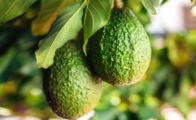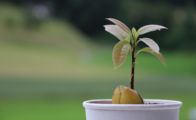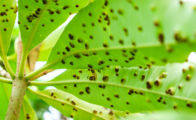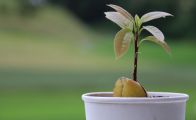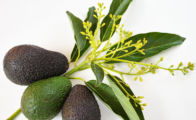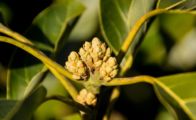Taylor Ritz
Avocados are semi-tropical fruits, and as a result, the trees have distinctly different blossoms than other kinds of fruit trees. Avocado flower buds have two types, and the blossoms open and close for pollination in a unique way.
What Makes Blossoms on Avocado Trees Unusual?
Avocado trees are capable of producing millions of flower blossoms, many more than other fruit trees, but only a small percentage of those blossoms become pollinated and produce an avocado fruit you can harvest.
During the blooming season, avocado trees become covered with thousands of small, yellow flowers growing in clusters. These clusters are called panicles, each containing dozens or even hundreds of small individual flowers.
The Two Types Of Avocado Flowers
Each flower on an avocado tree contains both male and female parts. Male reproductive parts are called the anther and stamen, and these produce pollen. The female reproductive part creates the ovary where the fruit develops and is called the stigma.
There are two types of flowers on avocado trees. Each avocado variety only has one or the other type of flower. The two types of avocado flowers are called type “A” and type “B”. In both types, the flowers bloom for a total of two days; the female part of the flower opens on the first day and the male opens on the second day. In type “A” blossoms, the female part opens in the morning and closes 2 to 4 hours later. In type “B” flowers, the female part opens in the afternoon instead.
In both types, the male opens on the same flower on the second day. These male parts shed pollen and fertilize any female flowers that happen to be open at that time. This complex flower fertilization helps ensure that each flower is cross-pollinated by a separate flower, ultimately resulting in a better fruit set.
Flower types of popular varieties are as follows:
Type “A:”
- Pinkerton
- Lamb Hass
- Hass
- Gwen
Type “B:”
- Zutano
- Bacon
- Ettinger
- Fuerte
Flower Types Affect Yield
When the two different flower types, A and B, are grown close together, trees of different types pollinate one another. This genetic diversity leads to higher fruit production and a better harvest.
The flower types produce different looking avocado fruits as well. Type “A” flowers produce avocados with thicker, darker skins that contain more oil. Type “B” flowers produce avocados with thin, bright green skins that contain less oil.
Moral of the Story
If you want to grow avocados in your backyard or home, set yourself up for success by growing a type “A” avocado tree and a type “B” avocado tree. Plant or place them close enough together so that they can cross-pollinate one-another and you will have a more successful crop yield from your avocado trees.



